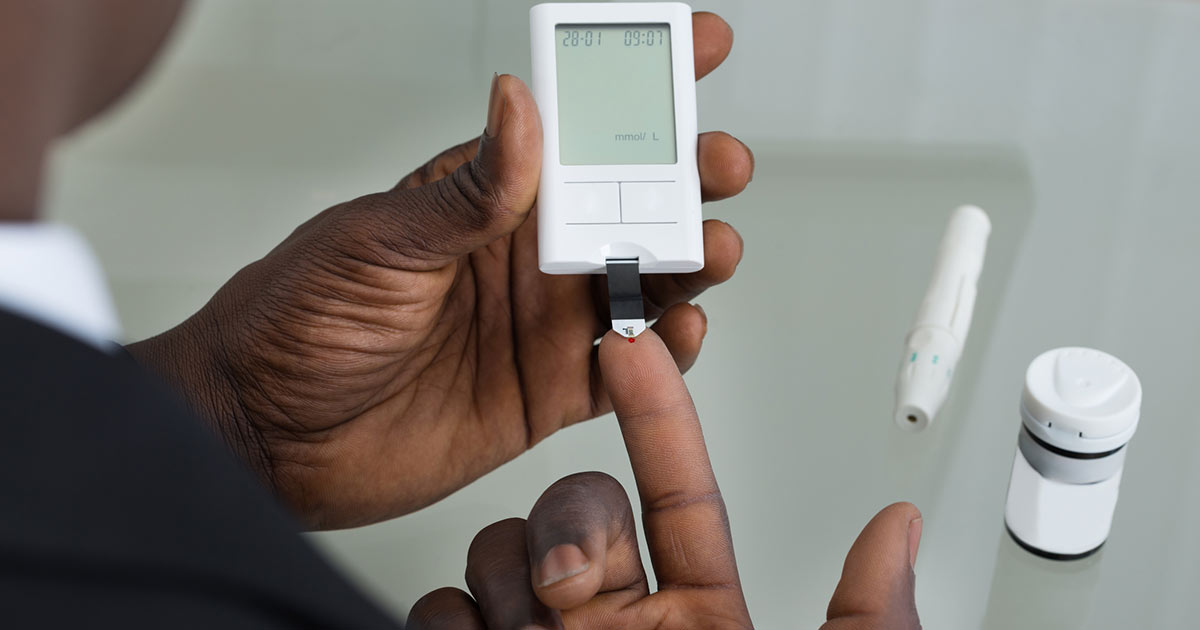Everyone experiences health challenges, but as humans age, our immune system becomes weaker making us susceptible to sickness. While men are more susceptible to health issues as they age than women; this explains why often women live longer than men. Amongst the different races, Black men – Nigerians, Afircans, African-Americans, etc are more likely than men of other races to have certain diseases especially as they clock 40. Some examples include obesity, high blood pressure, heart disease, stroke, diabetes, prostate cancer, etc.
Screenings are tests that look for diseases in their early stages, before symptoms develop. Once a man hits 40 years, he should consider going for screenings. This is because with screening, doctors could prevent and treat many of the common health conditions in men with early diagnoses. If caught early, doctors can more effectively treat major conditions like heart disease and colon cancer. Which screenings a man should have and how often depend in part on his family health history, personal health history and lifestyle habits.
The following list includes some of the most important medical conditions for men over age 40. Men over age 40 should consult a physician about what screenings to have and how often.
Heart Disease

On average, men develop heart disease about 10 years earlier than women, and 1 in 4 male deaths is caused by heart disease. Heart disease is a collection of diseases and conditions that cause cardiovascular problems. The causes of heart disease depend on the type of disease. Some possible causes include lifestyle, genetics, infections, medicines, and other diseases. Some of these common heart diseases include, Angina (chest pain from lack of blood flow), Heart attacks (death of heart muscle dies from loss of blood flow), Heart failure (heart can’t pump enough blood) and Arrhythmia (irregular heartbeat rate). It is important to run a screening test for the heart to ascertain the condition of the organ.
Blood pressure

Each time your heart beats, it pumps blood into the arteries. Blood pressure occurs when the pumped blood pushes against the walls of your arteries. High blood pressure increases the risk of heart attack, stroke, and other diseases. High Blood Pressure with other heart risk factors often reads above 130/80. This makes the heart pump harder and work overtime, possibly leading to serious health problems.
A blood pressure check is an easy, painless, noninvasive screening that can be done in the doctor’s office. According to the American Heart Association, blood pressure should be checked at least once every two years, beginning at age 20.
Treatments for high blood pressure include medicines and heart-healthy lifestyle changes.These changes, such as heart-healthy eating and exercise, can be very effective. Managing this condition is important since left unchecked, it increases your risk for heart attacks and strokes. Reducing stress is very important for high blood pressure management
Diabetes

Diabetes is a disease in which one’s blood sugar levels are too high due to insulin resistance (type-2 diabetes) or the body not being able to produce insulin at all (type-1 diabetes). Obesity, stress, and unhealthy food habits, being widely prevalent among today’s population, are leading causes.
It is one of the deadliest diseases out there and it damages your eyes, kidneys, and nerves. Diabetes can also cause heart disease, stroke and even the need to remove a limb. Maintaining an active lifestyle, eating a healthy diet, and getting your blood sugar levels tested regularly are ways to beat this killer disease.
Cholesterol
The body needs a type of cholesterol called the HDL, however, it doesn’t need one called the LDL (bad) cholesterol. This is the main source of cholesterol buildup and blockage in the arteries. High cholesterol increases the risk for heart disease and stroke. A blood test is used to measure cholesterol level.
The American Heart Association encourages people aged 20 and above, to have a cholesterol test every four to six years. People with known heart disease or certain other conditions may need to have their cholesterol level checked more often.
Regular heart check-ups can help monitor and diagnose any complications, especially if you have a family history of coronary heart disease or stroke. It is commonly recommended to undergo cholesterol testing every 5 years after the age of 40.
Prostate cancer
A simple blood test called the PSA (prostate-specific antigen) test can find early prostate cancer. The U.S. Preventive Services Task Force suggests that all men over age 50 talk to their doctor about having a PSA test and understand the risks and benefits of the test.
African-American men have a higher risk than white men for prostate cancer at a younger age and should start talking to their doctor about the test when they are in their 40s.
Enlarged Prostate
EP is a medical condition where the prostate gland becomes larger than normal size. It’s considered a normal condition of aging.The medical term for an enlarged prostate is benign prostatic enlargement (BPE). An enlarged prostate is very common in men over the age of about 50. It can affect younger men too, although this is uncommon. EP isn’t the same as prostate cancer and doesn’t increase your risk for cancer.
The cause of prostate enlargement is unknown, but it’s believed to be linked to hormonal changes as a man gets older. The balance of hormones in your body changes as you get older and this may cause your prostate gland to grow.
Apart from EP, men may also experience prostate infections in their 40s, particularly if they have a sedentary lifestyle.
Osteoporosis
Bone density has been shown to gradually decrease in the 40s, leading to loss of bone strength, and putting individuals at risk of developing a condition called osteoporosis. Osteoarthritis is also known as degenerative joint disease (DJD) and is the most common type of arthritis. Cartilage is the protective tissue that covers the ends of the bones. With Osteoporosis, the cartilage breaks down,giving the bones within the joint to rub together. This can cause pain, stiffness, and other symptoms leading to loss of bone strength.
Even though this condition is more common among menopausal women, calcium and vitamin D deficiencies can put men at risk too. It is therefore recommended that men consume food that are rich in calcium and Vitamin D. Furthermore, for those who work in air conditioned workspaces, it is particularly beneficial to have at least half-an-hour of sun exposure every day, as cold can weaken the bone.
Poor sleep, weight gain, lack of exercise, stress are common leading factors of this ailment.
Erectile Dysfunction
While women suffer from menopause, men above 40 years are prone to suffer from Erectile dysfunction, also known as impotence. This medical condition is characterized by difficulty in getting and keeping an erection. It can be an embarrassing thing to talk about. It’s been reported that more than half of men between the ages of 40 and 70 experience some form of ED. This physical and psychological condition can cause stress, relationship strain and low self-confidence.
Often this is due to other medical conditions, such as obesity, hypertension, or metabolic syndrome, which can all result in reduced blood flow to the penis. While medications – Viagra and Cialis are available to help, ED is still a challenging situation for men.
Erectile dysfunction is unlikely to resolve without some treatment or lifestyle changes. So good diet and exercise are key to having a good sexual life at this age, hereby overcoming ED. More so, men should visit their doctors more and seek medical help.
Low testosterone
Testosterone deficiency in the aging male is associated with the loss of libido, erectile dysfunction, depression, decreased cognitive ability, lethargy, osteoporosis, and loss of muscle mass and strength.
Testosterone starts to drop in a man’s thirties, but if that natural decline causes unwelcome symptoms like low sex drive or trouble concentrating, then you might need to visit your doctor. Your doctor can help diagnose any underlying issues that may be causing the “low-T” and discuss options like testosterone replacement therapy.
Although many symptoms may be tied to Low Testosterone (Low-T), total blood testosterone level is the most important measure of testosterone deficiency. To make a diagnosis, your doctor will use other specific signs and symptoms in addition to your testosterone blood level.
Colon cancer
Colon cancer, which is also called colorectal cancer, is one of the top leading cancers in the World. For men, the overall risk of developing colon cancer is about one in 22, which equates to 4.49 percent. Poor Diet, obesity, alcohol, smoking, diabetes, family history, etc are common causes of colon cancer
The American Cancer Society recommends that all men should be screened for colon cancer starting at age 45 until age 75. Several types of screening are available to find polyps in the colon that could develop into colon cancer. Men over age 50 should talk about the different types of colon cancer screening with their doctor.
Men with a family history of colon cancer should talk to their doctor about screening at a younger age and those who are over age 75 should talk to their doctor about whether they need to continue being screened.
Colon cancer is highly treatable and often curable with a 50% success rate, if the diagnosis takes place at an early stage when the cancer is only in the bowel and has not spread to other areas of the body.









Discussion about this post